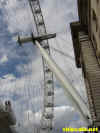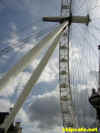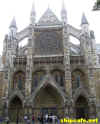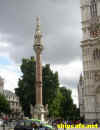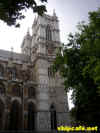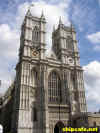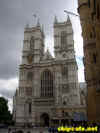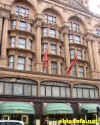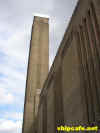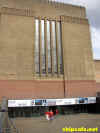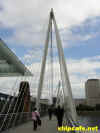|
I had a small scare
given that the ticketing agent thought that I was flying to somewhere
beyond London and advised that I would not be able to fly out that day
given the strike conditions in London. I then reiterated that London
was my final destination and that cleared things up.
My flight was not until 2:05pm so I had quite a bit of time to wait, as
did Joanne. We had a snack and coffee at a café in the airport for
a little while and then said 'farewell' as we each headed to our
respective terminals. I found a wonderful 'quiet area' in the
airport where guests can lie back in a chair, read, or nap. I chose
the latter for most of my waiting time before proceeding to my gate to
meet British Airways flight 815 for London. I was upgraded to 'Club
World' so that was proved to be very nice especially given that there was
nearly an hour delay on the ground prior to takeoff.
It was a pleasant flight and the approach to London was particularly
fascinating. We seemed to delay our landing in London due to traffic
and the ongoing strike at London-Heathrow. We circled directly over
the city of London and I was able to see a lot of the major sites such as
Big Ben, the Tower Bridge, and the London Eye. The landing into
Heathrow was, however, one of the roughest I'd ever experienced and the
flight crew jokingly referred to it as a windy day in London landing.
 |
 |
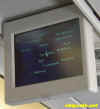 |
| British
Airways Flight 815 at Copenhagen's Kastrup Airport |
Waiting
for Boarding at Gate A15 |
Flight
Progress Monitor |
Shortly
after landing at London, Heathrow, I met up with my airport shuttle
representative to get to my hotel. A ride that would normally take
about thirty minutes took almost two hours given the number of stops that
we had to make at other hotels. I finally arrived at my hotel, the
London Marriott County Hall. The location was impeccable as it is
adjacent to the London Eye and just across from Big Ben. Right away
it seemed that London was one of the most overwhelming cities that I had
been in. Obviously that phenomenon tends to dissipate with time and
exploration but I had already predicted that it would be a tiring three
days.
Given that "Big Ben" was just a walk across a bridge from my
hotel, it was one of the first sites that I took in by camera.
Contrary to popular thought, "Big Ben" is actually named for the
bell which the clock tower houses.
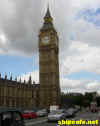 |
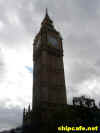 |
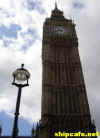 |
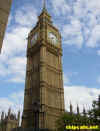 |
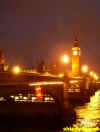 |
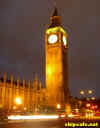 |
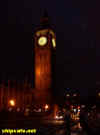 |
 |
| Various
perspectives of "Big Ben" over the course of three days in
London. |
|
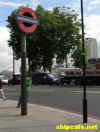
|
Given
how much there is to see and do in London, I knew that it would be very
overwhelming to tackle it all. I definitely wanted to get a plan
going. Upon my arrival to the hotel, it was already going on early
evening so I did not have much in mind other than a nap and dinner.
I did, however, attempt to learn "the Tube" (London
Underground). I wholeheartedly proclaim that the Tube is a
wonderfully efficient way to get around London and very easy to
decipher. The only challenge that I had encountered was simply
finding the Waterloo station from my hotel but I write that off as poor
logistical planning. It turned out that the easier Tube station to
use from the Marriott County Hall is the Embankment station. The
Embankment station is easily accessible by two entrances : Villiers Street
and Victoria Embankment.
|
Just adjacent to the Marriott County Hall hotel is the British
Airways London Eye. While I did not actually take a ride, it
certainly provided an interesting backdrop for many photos. I can
simply imagine what a striking view it provides it patrons. Designed
by Marks Barfield Architects, the London Eye was created with 1,700 tons
of steel making it heavier than two-hundred-fifty double decker buses.
Seen almost in conjunction with Big Ben is Westminster Abbey. Being
an architectural masterpiece of the thirteenth to sixteenth centuries,
Westminster Abbey presents a unique pageant of British history - the
Confessor's Shrine, the tombs of Kings and Queens, and countless memorials
to the famous and great. In the present day, the Westminster Abbey
is still a church dedicated to regular worship and to the celebration of
great events in the life of the nation. In 1965 to 1966, the Abbey
celebrated its 900th anniversary which accepted a theme of 'One
People'. It is a fitting theme given its worldwide outreach and
development of the lives of the English people.
Having had this be my
first visit to London, there were a couple of names that I knew I'd have
to visit. Of course one of the biggest retail names in London is
that of Harrod's.
I am not a really big spokesperson for the art of luxury shopping but I
knew that I needed to take the time to explore her various levels.
In 1999 Harrod's, London's most famous department store, celebrated its
150th birthday. The store began in the mid-19th century when Henry
Charles Harrod actually opened a grocery store on the nearby Brompton
Road. There was definitely a formal feel to the store and a vast
crew of security. Harrod's actually implements a dress code and has
been known to turn shoppers away for not adhering. By night,
Harrod's is lit up with 11,500 lights. The nearest Tube station to
Harrod's is Knightsbridge.
After having explored
Harrod's, I took a logistical approach on what to see next. I wanted
to do it in a manner that would be easy in regard to transportation via
the Tube. Among the next stops that I made were Marble Arch and
Madame Tussaud's. Marble Arch was originally designed in 1828 to be
the main entrance to Buckingham Palace. It was moved to where it is
now located when Buckingham Palace received an extension and there was no
longer sufficient space. Marble Arch has replaced Cumberland Gate as
a new entrance to the nearby Hyde Park at the top of Park Lane. The
road layout was changed in 1908 and 1961 which placed Marble Arch on an
island. Within view of Marble Arch is BT Tower which is a television
tower even though it does have regular internal floors. It was
constructed from 1961 to 1964 and stands at 625 feet (191m). Madame
Tussaud's is a world-renowned institution and became established on
Marylebone Road in 1884. It was rebuilt after a fire from 1925 to
1928.
|
 |
 |
 |
|
|
Marble
Arch, BT Tower, and Madame Tussaud's |
|
This
particular day had become very busy with all of the aforementioned
sightseeing but I decided to take the Tube to another area filled
with tourist sites just after Madame Tussaud's. The Thames
River is home to a great number of popular attractions so simply
strolling along it brings nearly a day full of activities.
Many vantage points along the Thames River also provide fantastic
photo opportunities. as I had found.
The Tower of London is just one very important sight along the
way. The Tower of London played an important role in history
and is composed of various sections : Traitor's Gate, Tower Green
and Scaffold Site, The Queen's House, the Chapel of St. Peter and
Vincula, the White Tower, the Bell Tower, and the Beauchamp Tower. |

|
|

|
Before visiting a new
city, I typically always have an image or landmark that I most closely
associate it with. Along with the image of Big Ben, I had always
envisioned the Tower
Bridge as being another trademark of London. I was sure to make
this my next point of interest and photography. The entrance fee for
the full tour cost four-and-a-half pounds and it was very well worth
it. The Tower's tour begins on ground level, proceeds up and over
the bridge, and then down to the other side where one can see an example
of the mechanics involved. Along the way are various informative
movies and placards to explain the history, magnitude, and science of the
Tower Bridge.
 |
 |
 |
 |
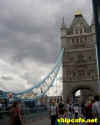 |
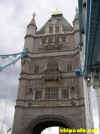 |
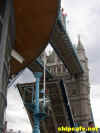 |
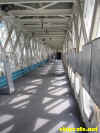 |
 |
 |
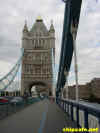 |
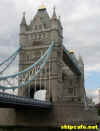 |
| Views
of the Tower Bridge from both Inside and Outside |
| Viewing
from both the Tower Bridge and from walking along the Thames River,
I noticed an unusual building off in the distance which is quite
curious. This unusual structure is the Swiss Re
"Gherkin". This structure was designed by Sir Norman
Foster and was built on the site of the old Baltic Exchange which
was gutted by an IRA bomb. Among the locals, this structure
has come to be known as 'the Erotic Gherkin' or 'the Towering
Innuendo'. Nonetheless, it does make an interesting addition
to the London skyline. |

|
|

|
|

|
Europe
is certainly well known for its city squares where residents and
visitors may stroll, people watch, and enjoy shops &
restaurants. One such area that I found in London is Picadilly
Circus. This area manages to portray an image very much like
New York City but just with a British accent!
Located here is the Eros Statue. Atop this bronze statue is an
archer symbolizing the virtue 'charity'. It is dedicated to
Lord Shaftesbury for whom affordable housing was a personal
cause. Londoners have adopted this statue as a symbolic link
to their pre-Roman past and continue to call it 'Eros'. |
|
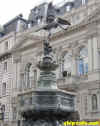
|
After
experiencing the excitement of Picadilly Circus, for which there is
an independent Tube station for access, I began to wander off and
look for additional landmarks. A relatively short walk south
is London's National
Gallery. A rather dramatic structure nearby is the
Admiralty Arch. The Admiralty Arch was designed by Aston Webb
between 1906 and 1911 and incorporated offices and two residences
for the Sea Lords. The triple triumphal arch forms part of the
ceremonial approach to Buckingham Palace.
Also nearby is Nelson's Column. Nelson's Column stands over
185 feet tall and around its base are four giant bronze lions
created by Edward Landseer. The column itself is 170 feet tall
and the additional height is of the statue of Nelson himself.
Nelson's Column commemorates the Battle of Trafalgar. |

|
|
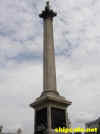
|
|

|
Trafalgar
Square itself is very impressive and also a place for residents and
guests to gather. Located herein is a fountain created in 1845
accommodating four copper mermaids and dolphin sculptures. As part
of the goings on was a band playing for a Midsummer Festival 'Jazz
on the Streets'. |

|
|
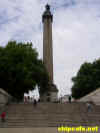
|
Nearby
to Trafalgar Square is Duke of York's Column. This 124 foot
monument was erected in 1833 to the glory of Frederick, second son
of George III. The Duke is remembered best by being the 'Grand
Old Duke of York' who marched his 10,000 men to the top of the hill
and marched them down again.
I certainly
noticed that London has a great number of pillars, columns, and
statues to commemorate historic dates or noble people in
history. Perhaps one of the most popular of these is
Cleopatra's Needle. I had heard the name a lot in the past and
wanted to make sure that I visited this one up close and personal.
Cleopatra's
Needle is sixty feet high and weights 186 tons. It is
also older than the city of London itself. The monument was
presented to the British in 1819 by Mohammed Ali, Turkish Viceroy in
Egypt. It was thought that the obelisk was too awkward to
transport to Britain but in 1878 it was erected by the Thames,
shortly after the Embankment was completed. Beneath
Cleopatra's Needle is a Victorian time capsule containing artifacts
of the day, including photographs of twelve beauties, newspapers,
and railway timetables.
Cleopatra's Needle does have a twin and it is located in New York's
Central Park behind the Metropolitan Museum of Art. |
|
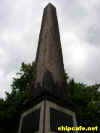
|
|

|
| Another
predominant feature throughout London is the number of parks that I
spotted. The Victoria Embankment Gardens, just nearby to
Cleopatra's Needle, is a narrow strip of public park by the Thames
which was created in the late-19th century with the construction of
the Embankment. |

|
On my final full day in
London, I still had various major sites to check out. In regard to
meals in London, things can be a bit pricey. I decided, therefore,
to eat as simply as possible. I did eat out one evening just to get
the city experience but wound up bringing delicatessen items to my hotel
room each night thereafter. I also found a wonderful kiosk just over
the bridge from County Hall which serves up unique pancakes with many
choices of fillings. There is also freshly squeezed orange juice
there which was equally wonderful.
I decided to find the famed Buckingham Palace and its surrounding
areas. I took the Tube to the Victoria station and it still took me
a bit of time to get my bearings. There may very well have been a
more ideal station to access. Buckingham Palace is one section of
the expansive Royal Residences including The Queen's Gallery, The Royal
Mews, Windsor Castle, Frogmore, The Palace of Holyroodhouse, Balmoral
Castle, Sandringham House, Clarence House, St. James's Palace, Kensington
Palace, and other historic venues.
Buckingham Palace has
served as the official London residence of Britain's sovereigns since
1837. It evolved from a town house that was owned from the
beginning of the eighteenth century by the Dukes of Buckingham.
Today it is the Queen's official residence. Although in use for many
official events and receptions held by the Queen, areas of Buckingham
Palace are open to visitors on a regular basis.
|
At
and Around Buckingham Palace |
|
|
 |
 |
 |
|
|
 |
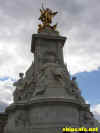 |
 |
|
|
|
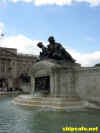 |
|
|
After having
experienced the Tate Modern Museum, I did just miscellaneous sightseeing
between there and returning to my hotel. Upon having crossed the
Millennium Bridge, I saw St. Paul's Cathedral nearby.
St. Paul's Cathedral is the Cathedral for the Anglican Diocese of
London. It holds church services and is also a museum.
Many notable soldiers, artists, and intellectuals have been buried
in the crypt, including Lord Nelson, the Duke of Wellington, and
Christopher Wren, famous architect who designed the building and
supervised its construction. |
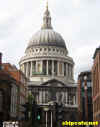
|
| I
really should afford myself the time to accentuate the hotel in
which I stayed. Anyone looking for a high-quality and elegant
hotel, I highly recommend the Marriott County Hall. For many
years, County Hall was the home of London's government in the form
of the London County Council and later on the Greater London Council
and Inner London Education Authority. The innermost building
designed by Ralph Knott was started in 1911 but the intervention of
two world wars impeded the progress for its completion in
1958. Quite interestingly, during the construction of County
Hall, a third century Roman ship was discovered.
The Marriott
County Hall seamlessly retains a feel of old-world charm and
construction with all of the modern amenities imaginable.
Walking through the lobby and the corridors, one really feels as if
they are in another era. The twenty-first century technology
becomes apparent in the room facilities and particularly in the
hotel's fitness and spa facilities. |

|
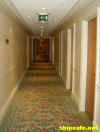 |
 |
Despite's London
having seemed overwhelming at first, it truly does not take very long to
find a comfortable affection with the city. With a sheer sense of
adventure and common sense, it is easy to learn the London Underground and
see all everything imaginable in a given amount of time.
|












